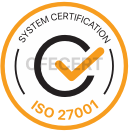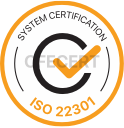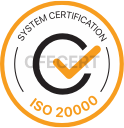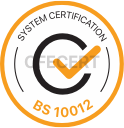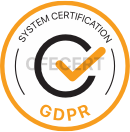How can I do a job better?
Standardization is a system that sets specific rules and defines the processes of applying these rules, creating quality requirements for products and services, opening the doors to a better world. This can include the manufacturing of a product, the management of a process, the provision of a service, or the supply of materials. It can cover a range of activities undertaken by organizations and used by customers.
Standards are a body of knowledge that represents the expertise on a subject, knowing the needs of the institutions they represent, including manufacturers, sellers, buyers, professional associations, users, and regulatory individuals. Standards are knowledge and powerful tools that can drive innovation and increase efficiency. They can make organizations more successful and improve the everyday lives of individuals, making them easier, safer, and healthier. Standards also facilitate collaboration among people worldwide.

What are the types of standards?
- Material Standards
- Product Standards
- Product Standards
- Method Standards
- Service Standards
- Optional Standards.
- Mandatory Standards.
If there were no standards, communication between people, machines, parts, and products would be quite challenging. International Standards are the bright side of technology. They are essential for products to work smoothly together and for people to communicate easily. Standards are the same and unchanging wherever you go in the world. When something has been produced using standards, everything is normal and works properly. However, you can always notice things that have been produced without standards. Without a standard foundation, improvements cannot be made. For example, if Operator A and Operator B do not complete the task in the same way, it will be almost impossible to improve their processes.
History of Standardization
With the increasing use of machines during the Industrial Revolution, the need for standardization grew, and the history of standardization began to gain momentum as the first ideas for standards were developed. Standardization efforts in the electrotechnical sector began in the mid-18th century with the aim of increasing cost efficiency, interchangeability of machine components, and optimizing mass production.
Although standardization began to emerge in the early 19th century, the formalization of international standards was only possible in the mid-20th century. In 1946, 65 delegates from 25 countries gathered in London to discuss the future of International Standardization. In 1947, ISO officially emerged, consisting of 67 technical committees (specialist groups focusing on specific subjects).
The Purpose and the benefits of Standards
The primary purpose of a standard is to improve operational efficiency and ensure that the society encounters healthy products. Standards also provide an important benefit, which is inspection. An organization or business that complies with standards is subject to inspection by the standard body.
Standards cover a wide range of topics, from construction to nanotechnology, energy management, health and safety, and sports equipment. They can be as specific as a particular type of product or as broad as general management practices, and their benefits are inevitable.
Facilitating trade Providing a framework for savings, efficiency, and interoperability Protecting consumers and building trust. The primary goal of a standard is to provide a reliable basis for people who share the same expectations about a product or service. Where can we find our standards in our surroundings?
- ISO 9001 Quality Management System: A standard that will enable more efficient work and reduce product defects, forming the basis of customer satisfaction.
- ISO 14001 Environmental Management System: A standard used to reduce environmental impacts, reduce waste, and create a more sustainable world.
- ISO 45001 Occupational Health and Safety Management System: A standard designed to help reduce accidents in the workplace, creating a global standard to keep the workplace safe, protecting both employers and employees.
- ISO/IEC 27001 Information Security Management System: An international standard for managing information security. The standard was first jointly published by the International Organization for Standardization and the International Electrotechnical Commission in 2005, revised in 2013, and again in 2022.
- Building Certification and Testing Services: Providing construction testing, inspection, and conformity (TIC) services necessary to plan and manage large building and infrastructure projects.
- ISO 50001 Energy Management Systems: Supporting organizations in all sectors to use energy more efficiently through the development of an energy management system.
- ISO 22000 Food Safety Management System: ISO 22000 is a result-oriented food safety management system developed to improve overall performance in food safety in any organization in the food industry, and it helps in the ISO 22000 is a result-oriented food safety management system developed to improve overall performance in food safety in any organization in the food industry, helping to improve performance and safeguarding consumer health.
World Standards Day, also known as Standardization Day, is celebrated every year on October 14 in honor of the decision made in London in 1946 to establish an international organization to simplify standardization. World Standards Day began to be celebrated after 1970.
You can’t control what you don’t measure, and you can’t manage what you can’t control. Manage your business with us! info@cfecert.co.uk



